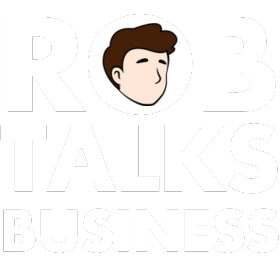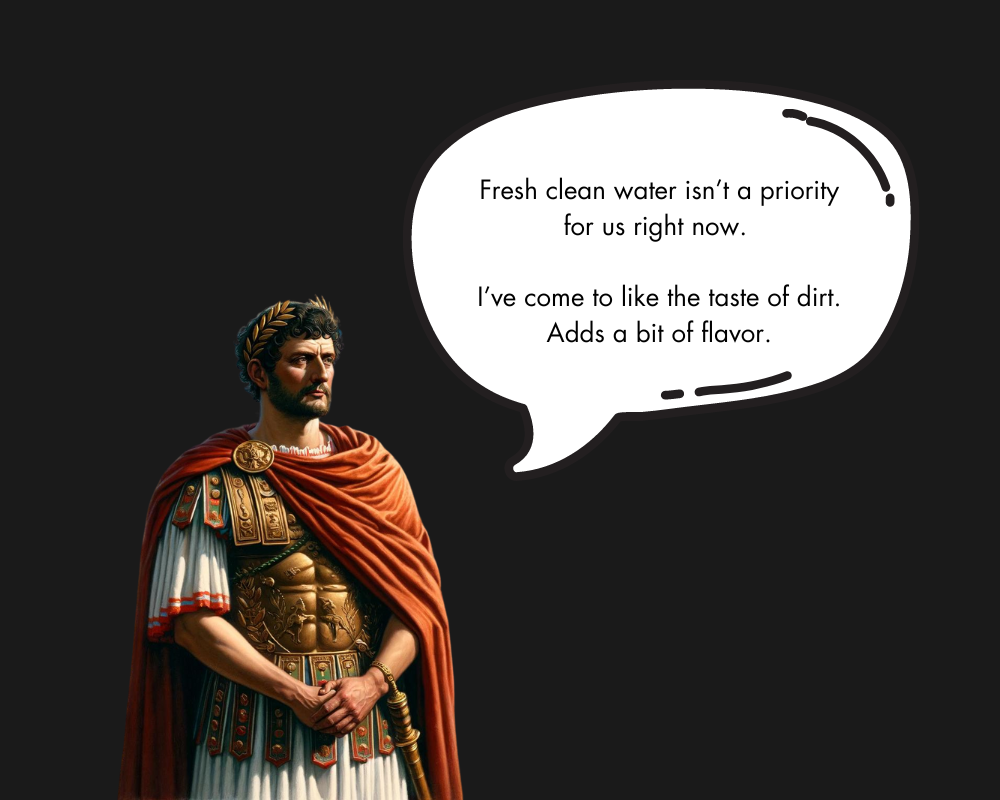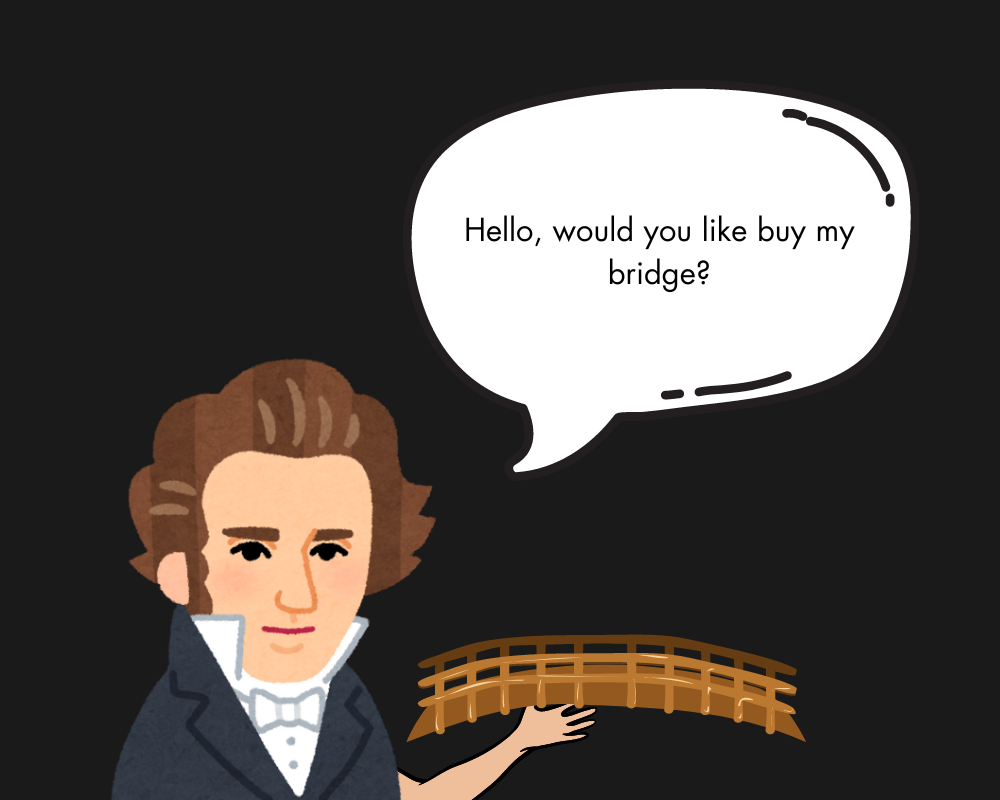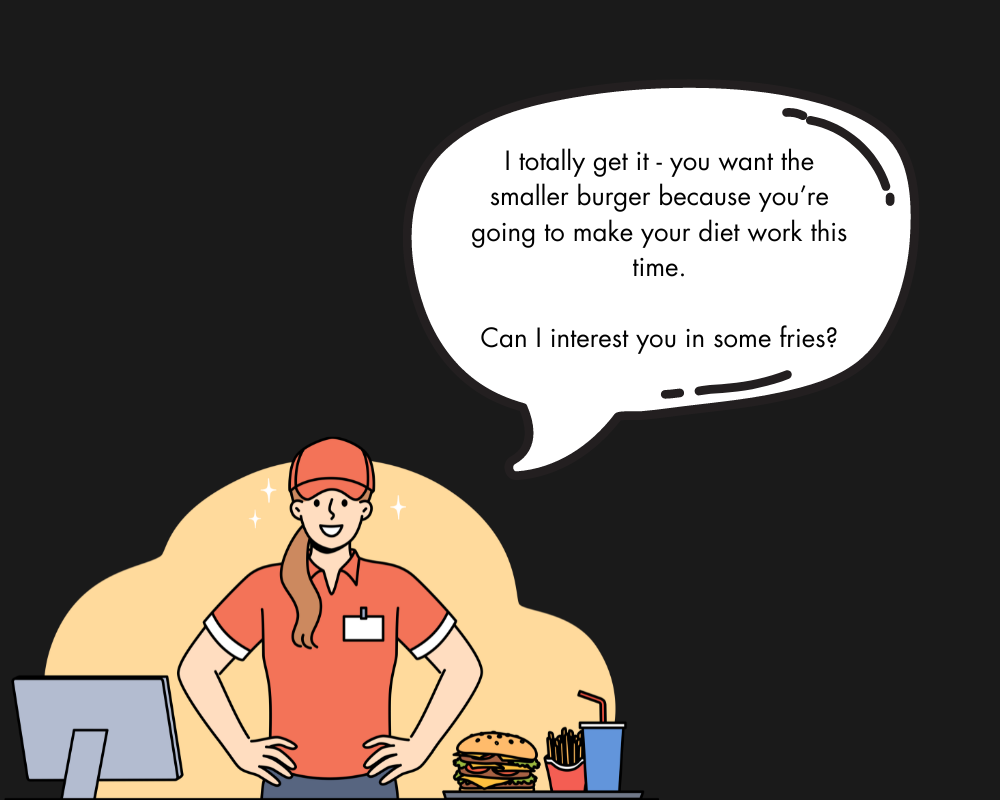"If you always do what you’ve always done, you’ll always get what you’ve always got." – Henry Ford
It is never enough to simply possess a product that solves a real problem, no matter how brilliant its design.
Even when customers are actively paying for solutions, comparing options, weighing the value of one over another, you will often face a formidable barrier: their organizational will to buy from you.
Here lies the true challenge - not the superiority of your product, nor its price, but the deep-rooted inertia that binds them to what they already know. The entanglements of long-term contracts, internal politics, and systems they have grown comfortable with become chains, trapping them in a state of stasis.
This concept is deceptively easy to overlook, even for those with the clearest vision of innovation.
I learned this firsthand.
My Own Failure to Recognize the Glue of Inertia
In high school, I developed a mobile application designed to modernize the outdated attendance system in schools, capitalizing on the rise of location services in smartphones.
My app was simple, efficient - a perfect replacement for the paper-based, labor-intensive method of tracking absentee notes. Parents would be reassured their children were where they should be, schools would reduce costs and time spent filing paperwork, and even the environment would benefit from the reduction in waste.
The only ones who might object were the students, as I had inadvertently designed a tool that made skipping class impossible (I suppose I was quite the hall monitor!).
Yet, despite its clear advantages, I encountered indifference.
The school board had no desire to change their ways.
My system, no matter how objectively superior, failed to break through the rigid structures of tradition.
The result? A dead-end product, locked out not by flaws in its design, but by the very forces of resistance to change.
Reflecting on this now, with the benefit of hindsight, I realize that my mistake was not in the product itself, but in my failure to appreciate the depth of institutional inertia - a truth that history has shown time and time again. Had I known then what I understand now, I would have studied these forces more carefully, learning that true power comes not from invention alone, but from the ability to navigate the currents of resistance and manipulate the forces that keep potential customers anchored to the past.
The Tale of the Roman Aqueduct Builder and the Stubborn Cities
NOTE: The following is a fictional tale from Roman histories, likely adapted from the accounts of other aqueduct engineers of the time like Sextus Julius Frontinus.
In the Roman Empire, water was more than a necessity; it was a symbol of life, power, and control.
Few innovations were as vital to the Empire’s expansion as its aqueducts, which carried fresh water from distant sources to the heart of Rome’s bustling cities. These engineering marvels were the lifeblood of an empire that relied on water to fuel its agriculture, industries, and citizens.
The aqueduct builders, masters of their craft, were held in high esteem. Among them was Marcus Aquillius, a renowned engineer whose skill in constructing aqueducts was unmatched.
Yet, despite his mastery, Marcus found himself facing an unexpected enemy: resistance to change.
The cities he approached were often locked into their existing water systems, bound by inertia and the invisible chains of investment and convenience. His aqueducts could solve their water shortages, but this was not enough.
The challenge Marcus encountered was not one of technology or price - it was the age-old human struggle to let go of what is familiar, no matter how flawed it may be.
The Iron Grip of Lock-In
Marcus experienced this resistance firsthand when he arrived in Ephesus, a rapidly growing city on the verge of outstripping its antiquated water infrastructure. His offer was simple: a new aqueduct, bringing fresh water from distant mountain springs.
It was a solution Ephesus desperately needed, far more reliable and efficient than the laborious process of transporting water in barrels from local rivers.
Yet, the Ephesian council resisted.
“We’re already paying to maintain our current system,” one council member said. “It’s old, yes, but it works. Besides, it’s integrated into our network of canals and cisterns.”
Another council member voiced a familiar concern: “Building your aqueduct would mean tearing up roads, disrupting trade routes. The cost and effort to change everything isn’t worth it, even if your system is better.”
This is the trap of sunk costs - the more a person, or in this case, a city, has invested in something, the more difficult it becomes to abandon it. Even when a superior option is laid before them, the fear of the transition, of the effort required to make a change, can outweigh the allure of improvement.
A Pattern of Resistance
Ephesus was not unique.
In Pergamon, Marcus was met with another wall of resistance: long-term contracts with existing water suppliers bound the city to a flawed system.
In Sardis, the city’s investment in underground reservoirs made them reluctant to consider an aqueduct, fearing their past investments would be rendered obsolete.
Time and again, Marcus found that even in cities where the need for his solution was apparent, the decision-makers were unwilling to bear the costs of change.
Marcus’s aqueducts were not being rejected because they were flawed. They were rejected because they threatened the status quo, and the cities had grown comfortable with their inefficiencies. It wasn’t a question of engineering; it was a question of inertia.
The Strategy of Adaptation
Recognizing the futility of trying to force his superior technology on cities unwilling to change, Marcus shifted his approach. He understood that to succeed, he had to work within the structures that bound his clients, not against them.
- Handling Lock-In with Integration: Instead of demanding cities abandon their old systems, Marcus offered to integrate his aqueducts with existing infrastructure. For cities like Ephesus, he proposed using his aqueducts as supplements during times of drought, rather than replacing their systems outright. This approach eased their fear of disruption and allowed them to gradually transition over time.
- Covering Contractual Penalties: In places like Pergamon, where long-term contracts prevented the construction of new infrastructure, Marcus offered to cover the penalties for breaking those contracts. By taking on the financial burden of change, he removed one of the key obstacles standing between him and a contract.
- Building for the Future: For cities hesitant to commit immediately, Marcus took a long-term approach. He began building aqueducts in regions where he anticipated future water shortages, using his own resources to fund the early phases. When the time came, he was ready with a solution at a moment’s notice. Marcus learned to be present when the need became urgent.
- Targeting Untapped Markets: Finally, Marcus turned his attention to smaller towns and emerging settlements. These places couldn’t afford the complex water systems of larger cities, making them more open to his scalable, affordable aqueducts. By focusing on these underserved markets, Marcus found clients who appreciated his approach and didn’t carry the baggage of larger cities' entrenched systems.
Victory Through Adaptation
In time, Marcus’s new strategy paid off.
While some cities like Ephesus never adopted his aqueducts, others, like Sardis and Pergamon, eventually saw the wisdom in supplementing their old systems with his new technology.
Smaller towns, in particular, became loyal clients, giving Marcus a steady stream of business that his competitors struggled to match.
He had learned a critical lesson: it was not enough to have the best product.
He had to master the art of overcoming resistance, navigating the tangled web of vested interests and sunk costs.
Marcus’s aqueducts were not merely feats of engineering - they were monuments to his ability to adapt, to understand the complexities of human reluctance to change, and to turn those complexities to his advantage.
The Modern Lesson
Marcus’s story offers a timeless lesson for today’s businesses. Whether you’re selling cutting-edge software or life-saving innovations, you will inevitably face resistance in the form of organizational lock-in.
Long-term contracts, existing integrations, sunk costs, and the fear of disrupting established workflows can stop even the best product from being adopted.
Like Marcus, success today requires more than selling the superiority of your solution. You must understand the hidden forces that bind your potential clients to their current systems. By offering migration services, integration options, or paying the cost of breaking contracts, you can make the transition easier.
Focus on timing - be ready when the need becomes urgent, and target underserved markets that don’t carry the weight of complex systems.
In the end, it’s not just about building the best product. It’s about mastering the art of overcoming resistance and making the forces of inertia work in your favor.
The Tale of Salesforce vs. Siebel: A Modern Battle with Organizational Lock-In
In the early 2000s, Siebel Systems stood as an untouchable giant in the realm of customer relationship management (CRM).
Its on-premise software was deeply embedded in the operations of Fortune 500 companies, dominating the market through its complexity, customization, and ability to integrate with vast corporate ecosystems.
Companies had poured millions into Siebel’s infrastructure, entrenching it in their workflows, training thousands of employees, and binding themselves with long-term investments. Siebel was not just a tool - it was a fortress.
And in that fortress, the clients were locked inside, tethered by the monumental costs of switching to anything else.
Then came Marc Benioff, a former Oracle executive with a vision to disrupt this seemingly impregnable market.
In 1999, he founded Salesforce, a cloud-based CRM solution offering a radically different approach - Software-as-a-Service (SaaS).
No need for expensive hardware or on-site servers. With Salesforce, companies could access their CRM entirely over the internet, paying only for what they used, and scaling as they grew. It was cheaper, faster, more agile.
And yet, despite the clear advantages of this model, Salesforce faced an overwhelming enemy: the power of organizational lock-in.
The Chains of Lock-In
For the large corporations that Siebel served, their CRM system was more than software - it was the backbone of their operations. Siebel was tightly integrated with other mission-critical systems like enterprise resource planning (ERP) tools, customer databases, and financial software.
To move away from Siebel was to rip apart the connective tissue that held their organizations together.
One bank, for instance, had built custom applications on top of Siebel’s CRM, linking customer data to loan processing and regulatory compliance. The thought of retraining employees, migrating data, and rebuilding these integrations was paralyzing.
As executives bluntly put it, “Salesforce looks great, but we’ve spent millions customizing Siebel to our exact needs. Switching now is unthinkable.”
This was the power of sunk costs. The deeper a company was entrenched in its existing system, the more formidable the obstacles became - not because Siebel was inherently superior, but because the cost of change was too great to contemplate.
Salesforce’s Strategy: Overcoming Inertia
Marc Benioff understood that to defeat a giant like Siebel, he couldn’t rely on the superiority of technology alone. He had to break the chains of organizational inertia, piece by piece, and methodically dismantle the forces that kept Siebel’s clients bound.
- Data Migration as a Service: One of the most significant barriers to switching was the challenge of migrating vast amounts of data from Siebel’s on-premise systems to Salesforce’s cloud. Benioff recognized that technological superiority meant nothing if customers couldn't see a clear path forward. Salesforce began offering comprehensive data migration services, often for free, easing the transition and providing hands-on support to ensure continuity and accuracy. They addressed the problem at its root: the fear of disruption.
- Free Trials and Pay-When-Ready Plans: Salesforce understood that timing was everything. Not every organization was ready to switch immediately. To address this, Salesforce offered extended free trials, allowing companies to test the platform at scale without immediate financial commitment. They also introduced pay-when-ready models, letting companies sign contracts but delay payments until after a successful migration. In essence, Salesforce said, "Take your time, and when you're ready, we'll be waiting."
- Integration with Existing Systems: Benioff knew it was unrealistic to expect companies to rip out their entire tech infrastructure overnight. So instead, Salesforce focused on coexisting with Siebel. Its cloud-based CRM was designed to integrate with existing on-premise systems, allowing companies to use both platforms side by side during the transition. This made the migration process less disruptive and more palatable for risk-averse executives.
- Tapping Untapped Markets: While Siebel’s grip on the enterprise market was firm, Salesforce set its sights on small and medium-sized businesses (SMBs). These companies didn’t face the same lock-in challenges as the giants. Many weren’t using CRM systems at all, and Salesforce’s affordable, scalable solution was a perfect fit for their needs. By growing its presence among SMBs, Salesforce built a robust foundation while slowly chipping away at Siebel’s dominance in the enterprise space.
- Marketing the Future: Benioff didn’t just position Salesforce as a cheaper or easier alternative to Siebel - he sold it as the future of CRM. Salesforce's cloud model was not only more efficient but also a hedge against the growing obsolescence of on-premise solutions. Benioff's message was clear: stick with Siebel, and risk being left behind in the rapidly evolving digital landscape.
The Fall of Siebel
Over time, Salesforce’s patient, methodical strategy paid off. The inertia that once held companies back began to erode. Slowly, large enterprises - seeing the flexibility and cost savings of Salesforce - began to make the switch.
What had once been unthinkable was now inevitable.
By 2005, Salesforce had surpassed Siebel in market share, and by 2006, Oracle acquired Siebel, signaling the end of its dominance.
Salesforce didn’t just out-feature Siebel; it outmaneuvered it.
By addressing the underlying barriers - data migration, timing, integration, and sunk costs - Salesforce paved a clear path for its customers, one step at a time. It transformed the market, proving that the future of software was in the cloud.
The Modern Lesson
The battle between Salesforce and Siebel offers profound lessons for today’s businesses.
Even the best product, with the most advanced features, can be shackled by organizational lock-in. It's not enough to build a superior solution. You must understand the forces that bind customers to their current systems - the fear of change, the costs of migration, the inertia of long-term investments.
Salesforce succeeded not because it was a better product, but because it helped customers overcome these barriers. It offered data migration, integration options, and flexible pricing models that allowed customers to switch without disrupting their entire organization.
Benioff’s genius was in his ability to see beyond technology - he saw the human resistance to change and crafted strategies to dissolve it.
In the end, victory in any market is not just about innovation; it’s about understanding the complex web of factors that hold your customers back.
Only by unraveling those threads can you lead them into the future.
Understanding the "Locked-In" Challenge
When a customer has already invested heavily in solving a problem, your real challenge is not just proving that your product is better, but convincing them that switching is worth the upheaval. Organizational lock-in is one of the most potent obstacles you will face in sales.
Here are some of the most common scenarios:
- “We’re paying $200,000 annually for this, but we still have 18 months left on the contract.”
- “Your software looks great, but we just rolled out a new solution through SAP, and our team prefers keeping everything centralized.”
- “This system is superior to what we’re using, but we’ve already spent years integrating with five other platforms, plus custom internal development, so a switch would be too costly.”
These statements reflect classic lock-in problems: whether contractual obligations, the convenience of existing integrations, or the sheer cost of reconfiguring a complicated setup, these forces have little to do with the quality of your product.
And yet, they are powerful enough to cause even the most promising deals to slip away.
This is the reality you will often encounter. You may have a superior product and a market hungry for a solution, but the external factors - inertia, sunk costs, and internal resistance to change - can be overwhelming.
The Nature of the Lock-In Challenge
The issue isn’t just about a company’s reluctance to adopt a new system.
It’s about their fear of disruption - the fear that switching will upset a delicate balance they've spent years refining.
For these companies, the costs of change are not just financial but emotional and organizational. The sense that they are locked into their current solution is palpable, and these forces make it hard for even the best product to break through.
So, how do you overcome these barriers?
Overcoming Organizational Lock-In in a Sales Cycle
Understanding that the greatest resistance to change often comes not from the product itself, but from the costs and complexities associated with change, you must address the underlying causes of lock-in head-on. Here’s how you can do it:
1. Address Contractual Barriers
Customers bound by long-term contracts with existing vendors often hesitate to consider a new product, regardless of its superiority. However, these contracts are not necessarily impenetrable. Offer incentives to break the contract, such as covering the termination fees or providing discounts during the migration phase.
For instance, one SaaS company successfully converted a major client by offering to pay a portion of the contract-breaking fee. The client was initially tied to a multi-year agreement but realized the superior value of the new product.
By easing the financial burden of breaking the existing contract, the company won a long-term, profitable relationship.
2. Offer Migration as a Service
Data migration is one of the most daunting tasks for any organization switching from one system to another. The effort to transfer years of accumulated data, ensure continuity, and train employees on a new platform can feel overwhelming.
In this scenario, you must remove the pain of migration.
Offer migration as a service, where you handle all aspects of transferring data, ensuring compatibility with their existing systems, and managing the transition process for them. Some companies, such as Salesforce, offer migration services for free, making the switch as seamless as possible.
Consider how Microsoft successfully converted many clients to Office 365 by offering full migration support, ensuring businesses didn’t lose productivity during the switch.
By positioning the transition as effortless, they overcame a significant barrier to entry.
3. Integrate with Existing Systems
One of the biggest fears for organizations is that switching to a new system will require them to rebuild everything from scratch. They’ve spent years integrating various systems, ensuring workflows run smoothly, and they cannot afford to disrupt that balance.
Instead of asking them to rip out their entire infrastructure, offer to integrate your solution with their current systems. This way, they can run both systems in parallel, easing the transition over time.
For example, Slack, when competing with Microsoft Teams, built its appeal by offering integrations with third-party tools that many companies relied on, positioning itself as a more flexible solution.
By enabling customers to run two systems side by side, you make it easier for them to gradually switch over, rather than forcing an all-or-nothing decision.
4. Emphasize Total Cost of Ownership
Companies that have invested heavily in custom integrations and internal systems often struggle to justify the costs of switching - even if they know the new solution is better. In these situations, it’s crucial to emphasize the long-term total cost of ownership (TCO).
Show them how sticking with their current system might cost more over time - through maintenance, downtime, or inefficiencies - compared to adopting your solution.
Amazon Web Services (AWS) used this strategy to win over clients from traditional data centers.
By demonstrating the TCO benefits of cloud computing, AWS convinced large enterprises that the initial pain of switching would pay off in the long run.
5. Offer Free Trials with Extended Benefits
Sometimes, the greatest lock-in is simply timing - the client isn’t ready to switch, or their current setup is “good enough” for now. Offering extended free trials or pay-when-ready options gives clients time to experience your product without the immediate pressure of commitment.
Salesforce used this strategy to compete against Siebel, offering extended free trials to allow companies to test Salesforce without financial commitment. Salesforce knew that once companies experienced the benefits, they would be willing to transition when the time was right.
This approach removed the urgency from the decision, making the process feel less risky for potential customers.
Building Your Own Lock-In
Just as it’s crucial to overcome the lock-in of others, you must also think strategically about how to build your own lock-in. But avoid the negative tactics of withholding data or making it difficult for customers to leave. Instead, focus on creating value-based lock-ins.
In the realm of SaaS, particularly in customer list management services, the temptation to trap customers by refusing to release customer lists is strong - but misguided.
This practice, while creating short-term barriers to exit, breeds resentment and damages trust. A more powerful approach is to foster value-based lock-ins that make customers want to stay, rather than forcing them to.
Here’s how these companies can create a lock-in strategy that not only retains customers but builds loyalty and trust.
1. Offer Enhanced Data Intelligence and Insights
Instead of restricting access to customer lists, these platforms should focus on offering exclusive, proprietary data intelligence that goes far beyond simple raw data. Merchants might be able to export their customer lists, but they would lose the actionable insights available only through your platform.
- Predictive analytics on customer behavior (such as churn risk or purchase likelihood) could give merchants an edge they won’t find elsewhere.
- Advanced segmentation based on behavioral patterns that maximizes ROI.
- AI-powered campaign optimizations that automatically adjust based on performance data and audience behavior.
These intelligent tools make your platform indispensable. The raw data becomes secondary to the deeper insights and recommendations that only your platform can provide. If a merchant were to leave, they would lose this competitive advantage, making the thought of switching far more costly.
2. Offer Integrated Workflows and Automations
One of the most effective ways to lock in customers is by embedding your platform into their daily workflows. The more integral your platform is to their operations, the harder it becomes to leave. SaaS businesses should highlight their ability to automate complex workflows, integrating email, SMS, and other marketing channels into a seamless, cross-channel experience.
- Multi-channel automations that synchronize email, SMS, social, and push notifications in ways that other platforms struggle to replicate.
- Deep integrations with e-commerce platforms like Shopify or CRMs like Salesforce, creating a centralized hub where merchants can manage all their operations effortlessly.
- Customizable workflows that merchants have invested time into building, which automate and optimize their marketing efforts across channels.
By embedding these automations into the client’s business, migrating away becomes a costly, complex task. The workflows merchants have set up represent hours of labor and expertise. Rebuilding them on a new platform would require tremendous effort, making your platform invaluable and hard to replace.
3. Provide Exclusive Features or Partnerships
A compelling lock-in strategy lies in offering features or partnerships that competitors cannot. By providing access to exclusive tools, partnerships, or services, you create unique value that makes it far less attractive for customers to leave.
- Exclusive partnerships with key service providers or marketing channels, such as early access to consumer segments or partnerships with premium delivery services.
- Unique co-marketing opportunities that drive customer growth, available only through your platform.
- Exclusive integrations with certain apps or data providers that enhance marketing capabilities and provide a superior edge over competitors.
These features make it clear to merchants that leaving your platform means losing access to something irreplaceable, keeping them deeply invested in staying.
4. Tiered Loyalty or Long-Term Pricing Benefits
Instead of holding data hostage, encourage customers to stay by rewarding them for their long-term loyalty. Tiered pricing models and long-term discounts are powerful tools for creating positive lock-in strategies that incentivize customers to stay engaged with your platform over the years.
- Progressively better pricing the longer a client remains (e.g., after two years, they receive a 10% discount on services).
- Tiered support where long-term clients receive faster response times, priority features, and dedicated customer success teams that enhance their experience.
- Exclusive consulting services for long-term clients, helping them maximize their platform use and achieve better results.
This type of lock-in isn’t punitive - it’s rewarding. It creates a positive feedback loop where leaving means giving up discounts and privileges built over time, making switching far less appealing.
5. Foster Community and Ecosystem Lock-In
An overlooked yet highly effective form of lock-in is creating a sense of community and ecosystem around your product. This transforms your platform into more than just a tool - it becomes a network of value that customers feel part of.
- Build user groups where merchants can share best practices, collaborate, and learn from each other. This fosters a sense of belonging and access to a broader community.
- Offer a partner ecosystem of certified consultants and experts who specialize in optimizing your platform, adding an extra layer of value to the service.
- Host exclusive webinars, events, and training sessions that provide merchants with insights, industry trends, and advanced tips unavailable elsewhere.
By weaving merchants into a supportive ecosystem, you create a deeper sense of loyalty and dependency that is hard to replicate on another platform. The community itself becomes part of the value, making customers hesitant to leave and lose this supportive network.
6. Flexible Exit Strategies and Migration Assistance
Surprisingly, one of the most effective lock-in strategies is to offer easy exit processes. Rather than making it hard for customers to leave, build trust by ensuring that they can exit smoothly - and, if needed, return easily as well. This counterintuitive approach can build more loyalty than trying to lock them in aggressively.
- Offer seamless export of data and migration assistance if merchants choose to leave. This transparent process shows confidence in the value you provide, rather than relying on forced retention.
- Provide return incentives: If a customer leaves and decides to come back within a specified period (e.g., 12 months), allow them to reactivate their account with all data intact and perhaps offer a discount as a “welcome back” gesture.
By making leaving painless, you build an image of goodwill and confidence, signaling that customers stay because they want to, not because they’re trapped. This flexibility builds a long-term, trust-based relationship, where customers feel comfortable with the knowledge that returning is always an option.
AI as the Ultimate Value-Based Lock-In Strategy for the 2020’s
AI represents a formidable tool - not just for its power to automate and optimize, but for its ability to bind a client to your platform through invisible, yet potent, chains of investment and personalization.
The longer a business invests in training an AI, the deeper the roots grow, and the more difficult it becomes to extricate themselves from the system. What may begin as a technological advantage quickly becomes a strategic weapon - a form of value-based lock-in that is far more effective than crude tactics like withholding data.
AI and the Sunk Cost Trap
Consider the psychology of sunk costs.
Once a company has devoted substantial time and resources to training an AI, they have made an investment that feels too costly to abandon. Each hour spent refining the system, feeding it data, and optimizing its algorithms is an hour of value woven into the fabric of their operations.
To switch to a new platform would mean starting from scratch, abandoning the AI's learned behaviors, and retraining a new system at great expense.
This is where the power of AI as a lock-in lies: it creates a sense of entrenchment.
The more they train the AI, the more valuable it becomes, and the greater the inertia to stay. Like a commander who has committed his troops to a costly siege, the customer finds it hard to retreat without sacrificing everything they’ve already invested.
The Chains of Personalization and Workflow Optimization
The true strength of AI, however, lies not just in what it does, but in how it becomes indispensable. Over time, an AI system tailors itself to a company’s specific needs - learning its unique patterns, predicting its customer behavior, and optimizing its workflows. This personalization creates a bond that is almost impossible to replicate.
Imagine a company that has trained its AI to automate complex marketing campaigns, predict product demand, and offer personalized customer recommendations.
The AI has become more than a tool - it is now the brains behind critical decisions. To move to another platform would not only mean losing the AI's intelligence, but also the workflow efficiency and deep customization that has been built over time. The value lies not just in the raw data, but in the finely tuned machinery of intelligence that has been created.
Data Integration: The Web of Complexity
As companies grow more reliant on AI, they often integrate it with multiple systems - customer databases, sales pipelines, inventory management, and more.
The AI becomes the central node in a complex web of data, pulling from various sources to deliver insights that no single system could provide. This level of integration creates an even tighter lock on the client.
The prospect of switching platforms now becomes not just an inconvenience, but a logistical nightmare.
Untangling this web would mean reintegrating data streams, rebuilding connections, and sacrificing the efficiencies that the AI has brought to the organization. It is not simply about finding another system - it’s about reconstructing an entire ecosystem that revolves around the AI.
Ongoing Learning: The Power of Adaptation
AI is not static - it learns, adapts, and improves over time.
As more data flows through the system, the AI refines its algorithms, becoming smarter and more efficient. This ongoing learning creates a dynamic where the AI grows in value with each passing day. The longer a company uses the AI, the more tailored and precise it becomes, further entrenching the system into the company’s operations.
This constant improvement means that leaving the platform would be like abandoning a growing investment - a system that is evolving and adapting to the company's needs. To start fresh with a new AI system would be to forfeit this accumulated intelligence, resetting the learning process and losing the incremental gains made over time.
Proprietary AI: The Ultimate Lock
Some SaaS platforms offer proprietary AI algorithms, models that are uniquely suited to a particular industry or problem. These proprietary systems offer insights, predictions, and optimizations that no other platform can replicate. By embedding these algorithms into the core of their product, these platforms create an even stronger lock-in.
For example, an AI designed specifically for retail may offer precise customer behavior predictions, inventory optimization, and personalized shopping experiences that are impossible to replicate on a generic platform.
These proprietary tools become critical assets - tools that give the business a competitive edge that they are reluctant to abandon.
The Value-Based Lock-In of AI
The brilliance of AI as a lock-in strategy is that it does not rely on restricting a client, but on creating such overwhelming value that leaving becomes unthinkable.
The sunk costs of training, the deep personalization, the intricate data integration, and the ongoing learning all combine to create a formidable barrier to exit. It is not about making it hard for the customer to leave - it’s about making the cost of leaving too high.
Where traditional lock-ins might rely on force or restriction, AI’s power lies in its ability to embed itself into the very lifeblood of a company’s operations. It becomes a silent force, growing in value, deepening its roots, and making itself indispensable. The customer, in turn, becomes bound by their own reliance on the system’s intelligence, unwilling to give up the immense value it provides.
The Subtlety of AI-Based Lock-In
Ultimately, AI represents the most subtle and powerful form of lock-in - one that relies on value, not coercion. As the AI becomes more personalized, integrated, and intelligent, it transitions from being a mere tool to being an essential partner in the company’s success.
And when a tool becomes a partner, walking away is not just difficult - it’s unthinkable.
This is the essence of strategic power in the world of AI: not to force loyalty, but to make it impossible to leave without sacrificing far more than the customer is willing to lose. A truly powerful lock-in is one where the customer chooses to stay, not out of necessity, but out of a recognition that leaving would mean abandoning a source of strength. In this way, AI is not just technology - it is a strategic weapon in the battle for customer loyalty.
The Power of Value-Based Lock-In
In today’s competitive landscape, forcing customers to stay through restrictive measures like withholding data will only result in dissatisfaction and erosion of trust. A far more effective approach is to create value so compelling that customers choose to remain. By offering exclusive insights, automations, features, loyalty incentives, and a strong community, SaaS businesses can build positive lock-ins that make their product indispensable.
In the end, true loyalty doesn’t come from creating barriers - it comes from offering a unique value that is too powerful to walk away from.
By focusing on these value-based strategies, your platform becomes more than just a service - it becomes an integral part of your clients’ success.






